Exploring two new iron maiden ants of the Cretaceous
In the recently published article “Two new iron maiden ants from Burmese amber (Hymenoptera: Formicidae: †Zigrasimeciini)” in Myrmecological News, Huijia Cao, Brendon E. Boudinot, Zhen Wang, Xiaofeng Miao, Chungkun Shih, Dong Ren, and Taiping Gao describe the morphology of two new “iron maiden” ant species in †Zigrasimecia of †Zigrasimeciini and share some ideas on mouthpart structures and function, diversity of the Cretaceous ant venation, as well as mesosomal evolution. All the specimens were collected in Burmese amber from Northern Myanmar.
The two new species of †Zigrasimeciini:†Zigrasimecia and †Protozigrasimecia swung their mandibles open posterolaterally, with closure in the opposite, anteromedial motion. Shutting the mandibles trapped prey between the spiniform traction setae of the oral mandibular face and the aboral (dorsal/outer) labral face. Prey, as if situated in a myrmecological “iron maiden”, was further immobilized by pressure from mandibular closure, forcing the victim against the numerous peg-like traction setae of the anterior clypeal margin. Stings, death, and sacrifice to the larvae might have ensued. With this scenario in mind, we hypothesize that †Zigrasimecia was a predator of small, soft-bodied prey such as various arthropods, including Collembola. Moreover, we discussed the mesosomal evolution based on †Protozigrasimecia chauli gen. nov, et sp. nov. Here, Huijia Cao shares some pictures and interesting stories of this study.
A Photoblog contribution by Huijia Cao
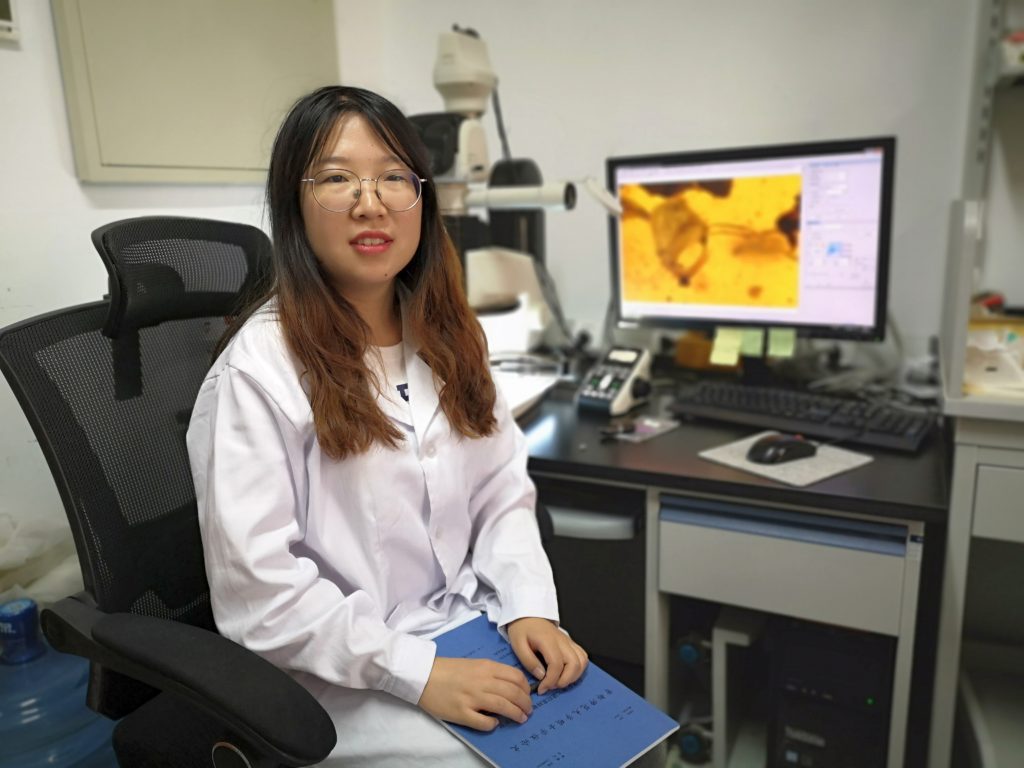
The first fossil record of ants could be dated back to the middle-Cretaceous, about 100 million years ago. I was attracted deeply by the feral mouthpart structures when I first saw these Cretaceous ants in † Sphecomyrminae and †Zigrasimeciini. They are so exquisite and incredible. I stubbornly thought there must be some evidence we have not found yet that might tell us more about the early development and evolution of morphological characters. Thus, I checked ant specimens in Burmese amber, collected in our lab to find out relationships among genera in the Cretaceous.

This is the first amber, piece in which I encountered †Zigrasimecia hoelldobleri Cao, Boudinot & Gao, 2020. Three workers are preserved in the yellow Burmese amber. The mouthpart structures of the middle one are delicate, and all the workers are covered with spaced and erected long setae. The name is in honor of myrmecologist Dr. Bert Hölldobler for his outstanding contributions on studying evolution and social organization in ants.
However, because of the position and angle of the holotype, it was difficult to observe and record details of its key characters. Fortunately, Dr. Elijah J. Talamas (Systematic Entomology Laboratory, Smithsonian Institution, Washington DC.) showed me some techniques for polishing amber and getting better photos. For example, it was too thick for the amber to be observed the key characters like outline of propodeum, mouthpart structured as the transmittance is low, although I had polished them before. Elijah showed me his technic to polished ambers as thin as possible, which not only make the surface of ambers approach to the ant infinitely, but also not damage the ant body. Moreover, he advised me to get in touch with our co-first author, Dr. Brendon E. Boudinot.
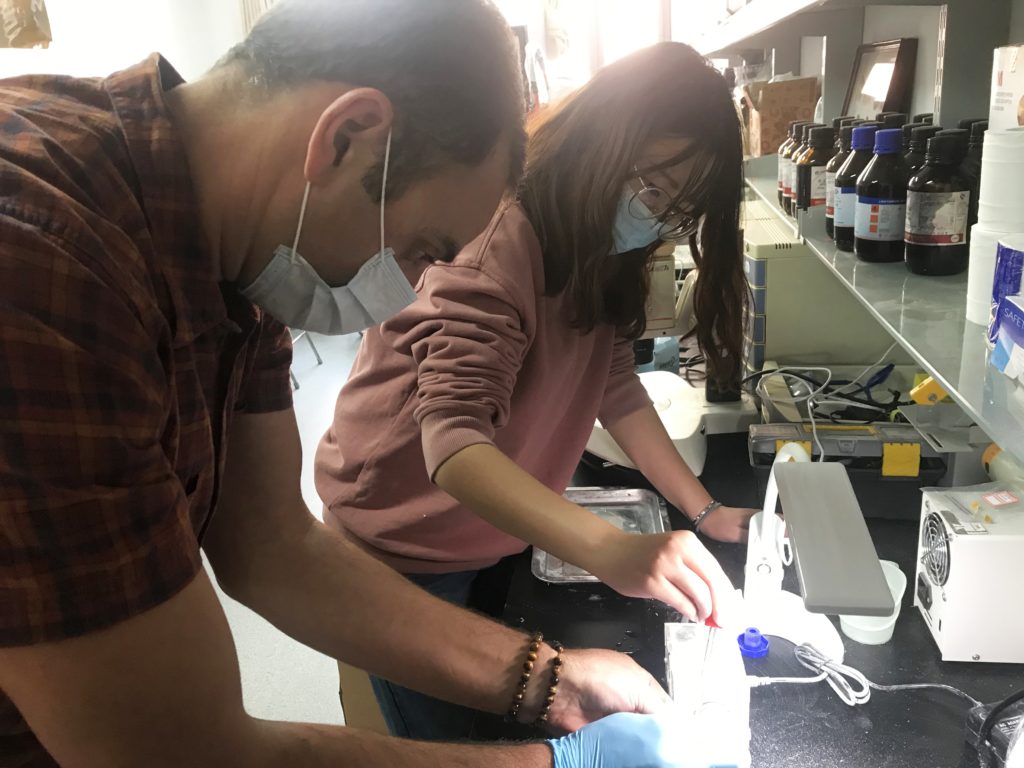
Dr. Brendon E. Boudinot (Department of Entomology & Nematology, UC Davis, USA.) is a humorous person, but he is rigorous and serious when we discussed articles and shared our ideas for research. I am sorry that I have not met with Brendon in person during this research process, but from his e-mails, I know he keeps a keen interest in myrmecology. It is funny that we e-mailed each other with line drawings on photos when we discussed †Protozigrasimecia chauli Cao, Boudinot & Gao, 2020.
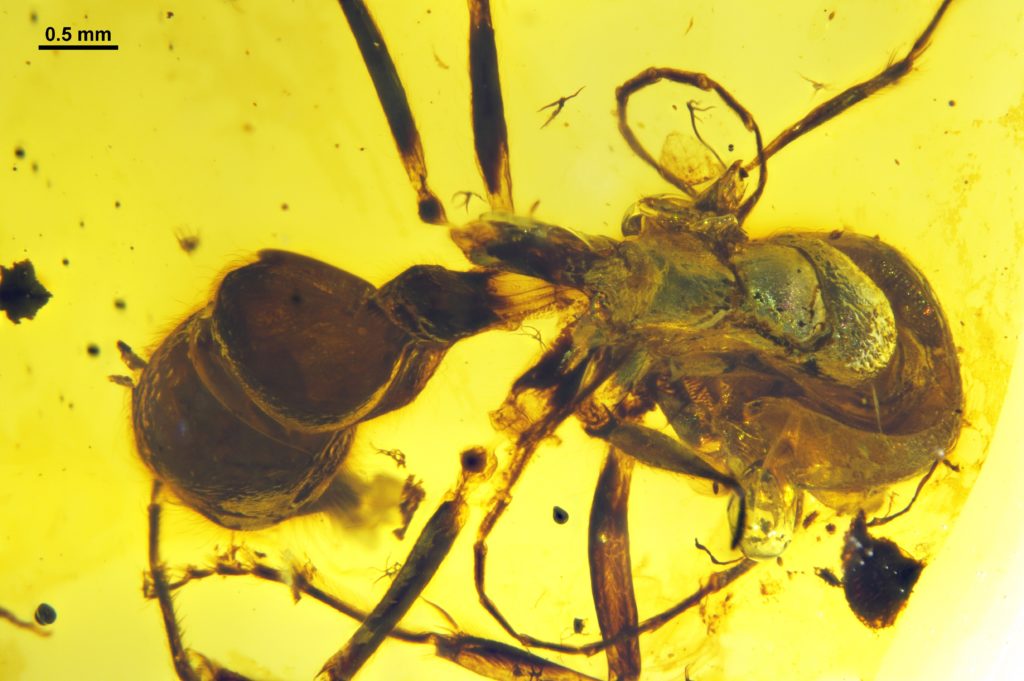
Finally, I appreciate the contribution of all the co-authors in our team. With the large number of ant specimens in Burmese amber in our lab, we will continue conducting more studies with the hope to identify and describe more interesting structures, new ant species, and their interactions with plants, other insects, or even vertebrates.

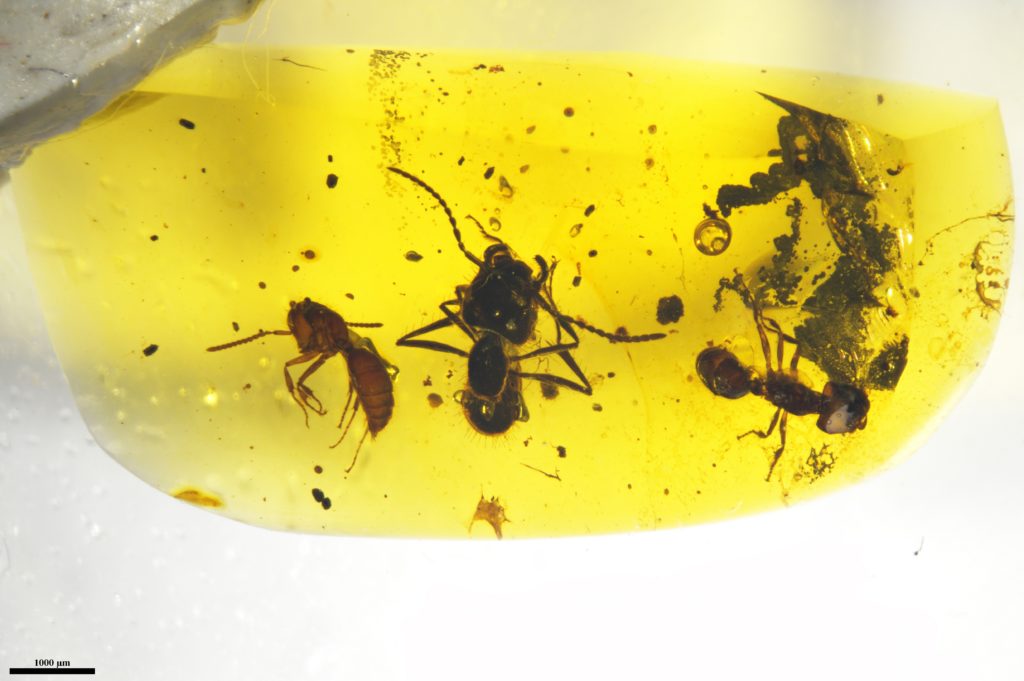
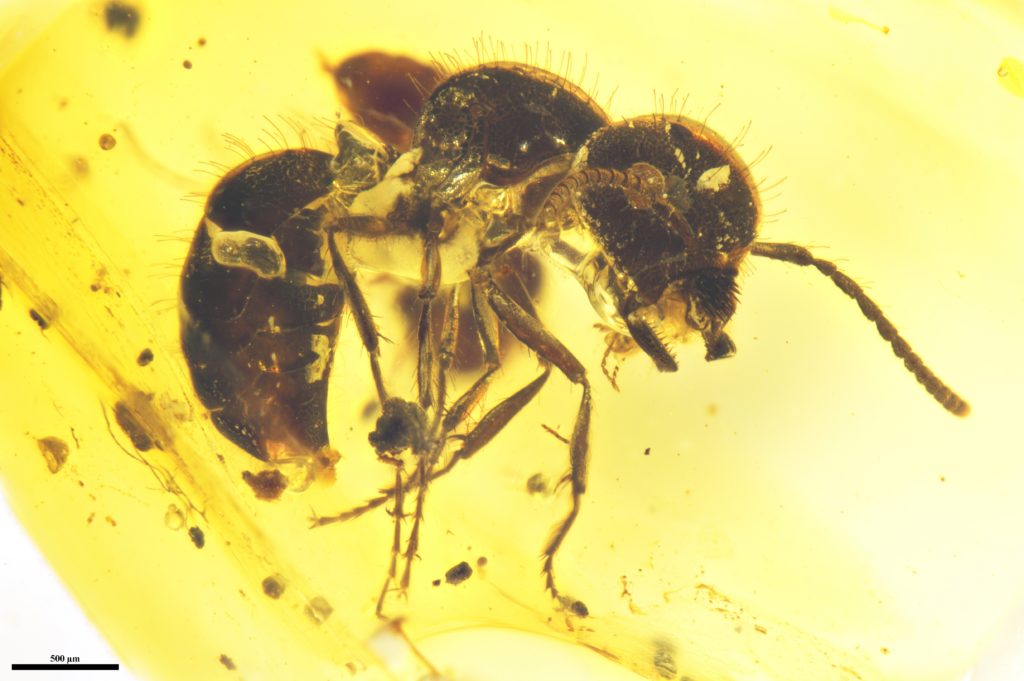

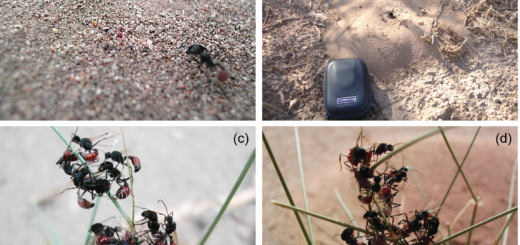
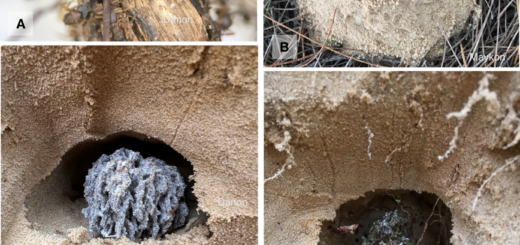

Really interesting ants. Wonder wat will be found next???